Discover Agile and Project Management - DrunkenPM Radio
Agile and Project Management - DrunkenPM Radio

265 Episodes
Reverse
Revolutionizing Recruitment with SuperHired featuring Josh Hill
In this conversation, Josh Hill discusses the innovative approach of SuperHired in transforming the recruitment process. He emphasizes the flaws of traditional hiring methods, the importance of understanding both candidate and company contexts, and the role of AI in recruitment. Josh advocates for a more human-centered approach to hiring, focusing on the 'job to be done' framework and the need for candidates to advocate for their own needs. He also provides insights on navigating the current job market and offers advice for both candidates and hiring managers.
Takeaways
- Recruitment should be viewed as a matchmaking process.
- Traditional resumes are outdated and do not represent candidates accurately.
- Work today is dynamic and requires a different approach to hiring.
- AI in recruitment often complicates rather than simplifies the process.
- Understanding the context of both candidates and companies is crucial.
- Companies need to be transparent about their culture and values.
- Candidates should advocate for their needs during the hiring process.
- Creativity in presenting oneself can help candidates stand out.
- The current recruitment system often leads to a lose-lose situation for both candidates and companies.
- I nvesting in the right hiring practices can lead to long-term success for companies.
Chapters
00:00 Introduction to SuperHired and Its Mission
05:52 The Flaws of Traditional Recruitment
08:38 The Role of AI in Recruitment
11:09 Understanding Candidate Context
13:51 The ATS Dilemma
16:16 Innovative Approaches to Hiring
19:08 Self-Discovery in Job Seeking
21:45 The Exchange of Value in Hiring
24:13 The Future of Recruitment
27:32 The Cost of Recruitment Mistakes
29:29 Transformational Hiring for Small Businesses
31:38 The Human Element in Business Success
33:54 Due Diligence in Recruitment
37:07 Advice for Job Seekers in a Tough Market
41:28 The Dark Side of Recruiting
44:36 Engaging with Hiring Managers
Contacting Josh
LinkedIn: https://www.linkedin.com/in/josh-hill-24b760a6/
SuperHired on LinkedIn: https://www.linkedin.com/company/108121043/
Web: https://www.superhired.ai/
Dave's Links
Contacting Dave: https://linktr.ee/mrsungo
Upcoming Classes on Katanu https://www.eventbrite.com/cc/dave-prior-classes-4758623
All Upcoming Katanu Classes https://katanu.com/
The Agile Network https://theagilenetwork.com/discover Use Expert Discount Code: DRUNKENPMCMC33 to get 33% OFF all memberships
In this engaging conversation, Dave Prior and Lonnie Weaver-Johnson delve into the complexities of giving and receiving feedback. They explore personal experiences, the emotional challenges associated with feedback, and practical strategies for improving feedback dynamics. Lonnie shares her insights on the importance of mindset, recognizing triggers, and the four Rs of feedback: recognize, receive, react, and respond. The discussion emphasizes the value of self-awareness and the need for constructive communication in both personal and professional settings.
Takeaways
- Feedback can be life-changing if handled positively.
- Many people struggle with receiving positive feedback.
- It's crucial to learn how to accept feedback in various settings.
- Feedback givers can help receivers by being mindful of their delivery.
- The receiver ultimately controls how they handle feedback.
- Compartmentalizing feedback can help in processing it effectively.
- Recognizing triggers can aid in managing emotional responses to feedback.
- Practicing self-talk can help combat negative internal feedback.
- It's okay to ask for time to process feedback before responding.
- Showing gratitude for feedback, even if it's hard to hear, can be beneficial.
Chapters
02:49 Introduction to Feedback Dynamics
05:35 The Importance of Receiving Feedback
8:26 Navigating Negative Feedback
11:40 Personal Stories and Lessons Learned
13:54 Triggers and Reactions to Feedback
16:38 The Four Rs of Feedback
19:42 Responding to Feedback Effectively
22:29 Self-Feedback and Positive Reinforcement
Links
Lonnie’s Session at 2025 PMI Global Summit
Beyond Going Through the Motions: Create Retrospectives That Lead To Change
https://pmiglobalsummit.gcs-web.com/program/agenda#sess61853976
Dave and Stuart’s Book
No One Is Coming to Save You: Power-ups to help surf the chaos
- Amazon: https://tinyurl.com/2765ztum
- Leanpub: https://leanpub.com/surfthechaos
Dave’s classes (CSM, CSPO, A-CSPO, PMP, PMI-ACP)
https://www.eventbrite.com/cc/dave-prior-classes-4758623
Contacting Lonnie
LinkedIn: https://www.linkedin.com/in/lonnieweaverjohnson/
Web: https://www.lonniewj.com/
In this conversation, Dave Prior and Hugo Bowne-Anderson discuss the evolving landscape of AI and data science, focusing on the role of AI agents in solving business problems. Hugo shares insights on how to effectively implement AI solutions, the importance of understanding the underlying data, and the need for continuous improvement in AI systems. They also touch on the skills necessary for navigating the AI landscape, the value of collaboration between technical and non-technical teams, and the importance of assessing the value of AI projects. Hugo concludes by offering a course on building AI applications, emphasizing the iterative nature of AI development.
Takeaways
- Hugo emphasizes the importance of data in AI applications.
- AI agents can automate tasks but require human oversight.
- Understanding the problem is crucial before implementing AI solutions.
- Prompt engineering remains a valuable skill alongside learning about agents.
- Consultants should educate clients on practical AI applications.
- AI systems should be built incrementally and iteratively.
- Value assessment in AI projects should focus on efficiency and cost savings.
- Continuous improvement is essential for AI systems to remain effective.
- Experimentation with AI tools can lead to innovative solutions.
- Collaboration between technical and non-technical teams is vital for successful AI implementation.
Chapters
00:00 Introduction to Data and AI Literacy
06:14 Understanding AI Agents vs. LLMs
09:18 The Role of Agents in Business Solutions
12:21 Navigating the Future of AI and Agents
15:24 Consulting and Client Education in AI
18:37 Building Incremental AI Solutions
21:29 The Future of AI Coding and Debugging
24:32 Prototyping with AI: Challenges and Solutions
25:32 Leveraging AI for User Insights and Competitive Analysis
27:29 Understanding Value in AI Development
32:05 The Role of Product Managers in AI Integration
33:00 AI as an Instrument: The Human Element
35:33 Getting Started with AI: Practical Steps for Teams
38:51 Building AI Applications: Course Overview and Insights
Links from the Podcast:
Stop Building AI Agents - Here’s what you should build instead (Article) https://www.decodingai.com/p/stop-building-ai-agents
Anthropic https://www.anthropic.com/engineering/multi-agent-research-system
The Colgate Study https://www.pymc-labs.com/blog-posts/AI-based-Customer-Research
Hugo’s Course (Starts November 3, 2025)
Building AI Applications for Data Scientists and Software Engineers (with a 25% discount)
https://maven.com/hugo-stefan/building-ai-apps-ds-and-swe-from-first-principles?promoCode=drunkenpm
(You can use the discount code drunkenpm to get 25% off)
How To Be A Podcast Guest with Jay Hrcsko https://youtu.be/vkNbgwcolIM
Contacting Hugo
LinkedIn https://www.linkedin.com/in/hugo-bowne-anderson-045939a5/
Substack https://hugobowne.substack.com/
Contacting Dave
Linktree: https://linktr.ee/mrsungo
Dave’s Classes: https://www.eventbrite.com/cc/dave-prior-classes-4758623
This interview is also available via video form here: https://youtu.be/vkNbgwcolIM
If you’ve never been on a podcast before, the whole idea of it can be intimidating. What if you say the wrong thing? Or say “Um… to your point” too many times. EVERYONE will judge you. Your career will be over. It will be the end of days….
Except none of that will happen. But just to put your mind at ease, Jack Hrcsko and I have put together a podcast with tips to help you be an excellent podcast guest. Between the two of us we’ve done thousands of podcast interviews. As hosts, we want to help you shine, and we want to create compelling content that will be valuable to he listeners. Selfishly, we also want help you make our jobs as hosts and editors a little easier.
Whether you are about to do your very first interview or you just want to make sure you are set up for success, there are tips in here that will help you level up your podcast guestiness.
Jay’s Contact Info:
LinkedIn: https://www.linkedin.com/in/jhrcsko/
Agile Uprising: https://www.agileuprising.com
Agile Uprising Podcast: https://agileuprising.libsyn.com
Chapters
00:18 Introduction to Podcasting and Guest Preparation
03:17 Effective Interview Preparation Strategies
06:20 Creating a Comfortable Interview Environment
09:05 Technical Setup for Podcast Interviews
12:11 Speaking Naturally and Avoiding Overthinking
15:16 Navigating the Interview Dynamics
18:10 The Role of Alcohol and Comfort in Interviews
24:32 Crafting Engaging Interviews
27:22 Navigating Guest Comfort and Communication
29:16 Embarrassing Moments in Podcasting
32:07 Worst Interview Experiences
35:49 Memorable Guests and Conversations
38:31 Utilizing Technology for Better Interviews
39:26 Connecting with Jay Hrcsko
40:26 Exploring Management Concepts
43:37 The Future of Work and Podcasting
Dennis Stevens joins drunkenpm for a deep dive into the challenges faced by middle management in organizational change. Dennis argues that Agile and transformation efforts often fail because they treat middle managers as a roadblock, when in fact, these managers are simply victims of a badly designed system. The core idea is that companies shouldn't try to eliminate these roles but must instead design specific organizational "containers" and routines that force middle managers to leverage human nature (like self-interest and competition) to drive innovation. The goal is to shift strategy from a static plan to a dynamic process that lives in the interactions between people, ensuring all the work being done is strategically aligned, measurable, and ultimately successful.
Key Takeaways
Middle Management is the Constraint: Organizational change, adaptability, and innovation will either happen or stall at the middle management level.
Systemic Failure: Middle managers are often marginalized as the "stepchild" and are expected to manage tasks and activities instead of creating the conditions necessary for teams to achieve outcomes.
Strategy is Dynamic: Strategy doesn't happen when a leader speaks; it becomes real when people start talking to each other and applying it, which requires designing routines that create safety for delegation.
Embrace Human Nature: Successful organizational design must leverage human nature, where competitiveness is the fuel, rather than relying on idealistic notions of "no ego, total alignment".
Conditions Over Practices: The success of Agile is due to the environment and conditions created for the teams, not the specific practices (like stand-ups or language). A key function of management is to consciously create those conditions.
Constraints Drive Innovation: Setting clear goals and enforcing constraints and consequences within the designed container will drive innovation by forcing teams to be efficient and reinvent, as opposed to operating without pressure.
Key Moments
0:02:24 The Core Thesis: Stevens introduces the central argument: "If you're trying to change how an organization runs, middle management is where it will either happen or stall."
0:03:41 The Problem Defined: Stevens uses the "stepchild" analogy to describe the plight of middle managers: having "fake power," lacking strategy, and being blamed for a system that was not designed to support them.
0:08:50 The Root Cause: Stevens identifies the problem: it's not a failure of management but a failure of the organization to deeply understand the conditions necessary for teams to innovate coherently in a complex system.
0:15:26 The Anti-Commune Stance: Stevens argues against the idealistic view of self-organization, stating that to succeed at scale, a system must be built where competitiveness is the fuel, rather than expecting people "to not be people."
0:20:08 The Glue of Strategy: Stevens defines where strategy truly exists: "Strategy becomes real when people start talking to each other." He stresses the need to build routines that create safety for delegation.
0:30:46 Constraints & Innovation: Stevens explains that constraints drive innovation by forcing efficiency, while a lack of constraints leads to inefficiency and a lack of pressure to reinvent.
Dennis's Article: Innovation By Design https://www.linkedin.com/pulse/innovation-design-orgwright-qeipe/?trackingId=6eh7kgcyKabru1Cdv4%2BERg%3D%3D
Links from the Intro:
Productivity Survival: https://www.tickettailor.com/events/markkilby/1905697
No One is Coming to Save You
Amazon: https://tinyurl.com/yhdk785j
Leanpub: https://leanpub.com/surfthechaos
Contacting Dennis
LinkedIn: https://www.linkedin.com/in/dennisstevens/
OrgWright: https://www.orgwright.com/
The Agile Network: https://tinyurl.com/2tywk29e
Contacting Dave
LinkedIn:https://www.linkedin.com/in/mrsungo/
Linktree: https://linktr.ee/mrsungo
The Agile Network: https://tinyurl.com/y3rhnnxp
In this conversation, Dave Prior speaks with Ashley Lucio about her extensive experience in communications, particularly focusing on the differences between internal communications and marketing. They discuss the challenges organizations face in deploying AI technologies and the importance of having communication professionals involved in these processes. Ashley emphasizes the need for effective communication strategies to manage organizational change and the potential pitfalls of neglecting this aspect. The conversation also touches on the evolving role of AI in communications and the necessity for a balanced approach that leverages technology while maintaining human insight.
Sign up for my Newsletter http://eepurl.com/iB2jUI
Takeaways
• Ashley Lucio has a diverse background in communications, marketing, and internal communications.
• Internal communications focus on employee engagement and understanding sentiment, distinct from marketing and PR.
• Effective communication is crucial during organizational changes, especially with AI deployment.
• Leadership plays a significant role in shaping communication strategies within organizations.
• Cognitive dissonance can arise when company values do not align with employee experiences.
• AI deployment should involve communication professionals to foresee potential issues.
• Organizations often rush AI implementations without proper planning or communication.
• The role of communications in project management is often undervalued but essential for success.
• AI can enhance efficiency in communications but should not replace human insight.
• The future of communications will require a balance between technology and human creativity.
Chapters
03:11 Introduction and Background
05:40 The Role of Communications in Organizations
09:00 Internal vs External Communications
12:26 The Impact of AI on Organizational Messaging
17:36 The Need for Communication Professionals in Change Management
22:23 The Importance of Holistic Communication Strategies
24:02 The Role of Data in AI Development
24:45 Communication Strategies in AI Implementation
25:50 Damage Control in AI Adoption
26:35 Pilot Programs and Scaling AI Solutions
28:34 The Value of Project Management and Communication
29:44 Metrics of Success in Internal Communications
30:43 The Importance of Intentional Messaging
32:48 AI's Impact on Communication Roles
34:29 The Future of AI in Creative Fields
36:14 Using AI as a Tool, Not a Replacement
Contacting Ashley
LinkedIn: http://linkedin.com/in/alucio
Other Links:
The Agile Network - Resilient: Adapt and Thrive (10/7- 10/8):
https://tinyurl.com/ynj5wjjm
Productivity Survival with Dave Prior and Mark Kilby
https://tinyurl.com/3zbdst52 (Use DavesDeep75 for a special discounted price)
DC Lean Agile Meetup - No One Is Coming to Save You with Dave Prior (10/8 12 PM Eastern):
https://www.meetup.com/dc-lean-agile/events/310850331/
(This podcast was originally recorded as a video episode. If you'd like to see that version: https://youtu.be/YSDNeAdyZiw)
In this conversation, Dave Prior and Johnu Marattil discuss the challenges of job applications, particularly the importance of tailoring resumes for each position. Johnu shares his personal journey of creating a tool, WahResume, to automate and enhance the job application process. They delve into the significance of understanding ATS filters, common mistakes applicants make, and strategies for effectively showcasing skills and experiences. The discussion also covers the role of AI in improving resumes and the necessity of preparing for interviews in today's competitive job market.
Takeaways
• Tailoring your resume for each job application is essential.
• Understanding ATS filters can significantly improve your chances of getting noticed.
• Automating the resume creation process can save time and effort.
• Highlighting skills and achievements is crucial for standing out.
• Using keywords from job descriptions in your cover letter can enhance your application.
• Applying for multiple roles increases your chances of getting shortlisted.
• A simple and lightweight resume format is often more effective.
• Practicing interviews can help build confidence and improve performance.
• The goal of job applications has shifted to getting interviews rather than just landing jobs.
• WahResume is a tool designed to streamline the job application process.
Links:
WahResume: https://www.wahresume.com/
(In the interview, Johnu shares a promo code that will give you a free month of full access - but you’ll need to listen to the recording to find out what it is.)
Johnu on LinkedIn: https://www.linkedin.com/in/johnumarattil/
Chapters
00:20 Introduction to Job Application Challenges
03:19 The Importance of Tailoring Resumes
06:11 Automating the Job Application Process
09:15 Using AI to Enhance Resumes
11:42 Common Mistakes in Job Applications
14:28 Navigating the Job Market Today
17:23 Demonstrating the Resume Tool
20:14 Improving Resume Scores with Keywords
24:59 Navigating Job Descriptions and Resumes
27:13 Tailoring Resumes for Experience
28:55 The Importance of Relevant Skills
30:10 Optimizing Resume Formats for ATS
33:04 Understanding ATS Parsing Challenges
37:52 Simplifying Resume Formats
39:50 Job Application Strategies and Tips
43:48 Leveraging Tools for Job Seekers
In this engaging conversation, Johanna Rothman takes over Dave Prior's podcast to discuss the journey of writing their new book with Stu Young. They explore themes of self-responsibility, emotional intelligence, and the importance of visual thinking in navigating complexity. The authors share their personal experiences and insights on collaboration, the writing process, and the necessity of embracing change in both personal and professional lives. They emphasize the significance of authenticity and continuous improvement as key elements in achieving success and fulfillment.
Takeaways
• The book was inspired by a drunken conversation on a ship.
• Self-responsibility is crucial; no one will save you.
• Emotional intelligence is a key skill for success.
• Personal Kanban helps in organizing tasks effectively.
• PDSA (Plan, Do, Study, Adjust) is essential for personal growth.
• Visual thinking aids in problem-solving and idea generation.
• Careers are not linear; adaptability is vital.
• Change is inevitable; embrace it rather than resist.
• Collaboration enhances the writing process and creativity.
• Authenticity and imperfection are strengths, not weaknesses.
Links from the Interview:
Johanna Rothman
Web: http://www.jrothman.com/
LinkedIn: https://www.linkedin.com/in/johannarothman/
Stuart Young
Web: https://www.stuartyoung.uk/
LinkedIn: https://www.linkedin.com/in/stuart-young-vis/
Dave Prior
Web: https://linktr.ee/mrsungo
LinkedIn:https://www.linkedin.com/in/mrsungo/
Newsletter Sign Up: https://tinyurl.com/3f5aevts
No One Is Coming to Save You
https://leanpub.com/surfthechaos
The Agile Network September Event (24 hours) - Expert's Showcase
Begins 9/7 at 8 AM Eastern
https://theagilenetwork.com/group/cca3b7ef-4fb3-42a7-8f97-59ab04a7b2e5/profile
Lean Coffee with Dave, Anu Smalley, Bob Galen, and Angela Johnson
9/7 at 2 PM Eastern
https://theagilenetwork.com/event/6ba65f21-fef8-4f48-8fb5-9b769c1b1b96/ROUND_TABLE
Lean DC - Agile Meetup - No One is Coming to Save You
10/8 at 12 PM Eastern
https://www.meetup.com/dc-lean-agile/events/310850331/?eventOrigin=group_events_list
Chapters
02:28 The Backstory of the Book
08:02 The Book's Premise: No One is Coming to Save You
13:59 Emotional Intelligence and Self-Awareness
17:24 Understanding PDSA vs. PDCA
18:41 The Importance of Self-Reflection
20:06 Getting Your Shit Together: Personal Kanban and PDSA
20:37 Visual Thinking in Agile Coaching
24:35 Navigating Non-Linear Career Paths
26:22 Embracing Change in Careers
32:251 Collaborative Writing and Finishing Projects
37:45 Dealing with Change and Relationships
41:12 The Value of Time and Self-Awareness
Dave Prior transitions control of his podcast to Alex Silva, a fellow Personal Kanban practitioner. They discuss the challenges of time management and productivity, sharing personal experiences and strategies. Dave emphasizes the importance of using personal Kanban as a tool for self-reflection and optimization, rather than just task management. He describes his "productivity recovery plan" using a notebook to maintain focus when his electronic system fails. Alex highlights the benefits of community and continuous learning, noting the impact of face-to-face interactions. Both agree on the value of daily routines, such as reading and exercise, for maintaining balance and productivity.
Contacting Alex
LinkedIn: https://www.linkedin.com/in/soualexsilva/
To learn more about Personal Kanban
Personal Kanban: https://www.personalkanban.com/pk/blog/
Dave’s Personal Kanban Blog Posts: https://drunkenpm.blogspot.com/2014/10/summary-of-personal-kanban-posts-for.html
The Agile Network’s Discover What’s NEXT event 8/20-21
https://theagilenetwork.com/group/ddb2c98a-5768-4763-9b3d-3ae170c384e0/profile
In this conversation, David Marquet shares his transformative leadership journey from commanding the Santa Fe submarine, one of the worst performers in the fleet, to implementing a culture of empowerment and accountability. He discusses the importance of shifting from a language of permission to a language of intent, encouraging leaders to empower their teams to think critically and make decisions. Marquet emphasizes the significance of mindset, distance, and self-coaching in effective decision-making, and how visualizing problems can lead to better solutions. The discussion culminates in practical advice for creating a culture of accountability and fostering a proactive mindset within teams.
Takeaways
Leadership is about inspiring teams, not just giving orders.
The language of permission can stifle innovation and accountability.
Empower your team to think critically and make decisions.
Mindset and distance are crucial for effective decision-making.
Coaching yourself can lead to better outcomes.
Visualizing problems helps in understanding and solving them.
Creating a culture of accountability is essential for success.
Encourage a language of intent over a language of permission.
Fresh perspectives can lead to innovative solutions.
Transformational leadership requires a shift in mindset and language.
LINKS
Distancing - How Great Leaders Reframe to Make Better Decisions by L. David Marquet and Michael A. Gillespie https://tinyurl.com/wtadnumb
You can check out the interview with David’s co-author, Michael Gillespie, here: https://on.soundcloud.com/zb166tQR3Ce8gp0tHd
Contacting L. David Marquet
Web: https://davidmarquet.com
LinkedIn: https://www.linkedin.com/in/davidmarquet/
Amazon: https://tinyurl.com/4ezbp4a9
Contacting Michael Gillespie
University of South Florida: https://tinyurl.com/yds54cbe
LinkedIn: https://www.linkedin.com/in/michael-gillespie-78661a4/
In this episode, Dave interviews Dr. Michael Gillespie about his book 'Distancing - How Great Leaders Reframe to Make Better Decisions', which explores psychological distancing as a tool for better decision-making. They discuss the importance of stepping outside one's own perspective to gain clarity, the different types of distancing (self, time, and space), and practical applications of these techniques. The conversation also touches on the role of journaling, the significance of construal level theory, and how mindfulness can complement these strategies. Ultimately, the discussion emphasizes the need for individuals to pause and reflect in order to make more informed decisions.
Takeaways
• Psychological distancing helps individuals see situations more clearly.
• Mindfulness is beneficial, but not always sufficient for immediate decision-making.
• There are three primary types of distancing: self, time, and space.
• Journaling in the third person can enhance self-awareness and clarity.
• Construal level theory explains the difference between high-level abstract thinking and low-level concrete thinking.
• Taking a pause is crucial in emotionally charged situations.
• Practicing distancing techniques can lead to better emotional regulation.
• Being a 'fly on the wall' can provide valuable perspective in difficult moments.
• It's important to normalize the practice of pausing in group settings.
• The ultimate goal is to make better decisions and improve overall well-being.
LINKS
Distancing - How Great Leaders Reframe to Make Better Decisions by L. David Marquet and Michael A. Gillespie https://tinyurl.com/wtadnumb
Contacting Michael Gillespie
University of South Florida: https://tinyurl.com/yds54cbe
LinkedIn: https://www.linkedin.com/in/michael-gillespie-78661a4/
Contacting L. David Marquet
Web: https://davidmarquet.com
LinkedIn: https://www.linkedin.com/in/davidmarquet/
Amazon: https://tinyurl.com/4ezbp4a9
In this conversation, Henry Poydar joins Dave on the podcast to discuss the innovative platform Steady, which aims to enhance team coordination and communication in the workplace. Henry shares his extensive background in engineering and web development, emphasizing the importance of context and intentions in project management. They explore the challenges of cross-team coordination, especially in the wake of the pandemic, and how Steady seeks to unburden teams from the coordination crisis. The discussion also highlights the concept of 'echoes' as a new way to provide contextual insights and the significance of celebrating individual contributions within teams. Overall, the conversation sheds light on the future of work and the role of technology in fostering collaboration and productivity.
Takeaways
- The importance of context in team coordination cannot be overstated.
- Intentions should be prioritized over commitments in project management.
- Writing down intentions serves as a forcing function for clarity.
- The pandemic has highlighted the need for better cross-team coordination.
- Steady aims to unburden teams from coordination challenges.
- The concept of a shared brain can enhance teamwork and communication.
- Echoes are a new way to provide contextual insights to team members.
- Nudges can help optimize workflows and improve productivity.
- Celebrating individual contributions is essential for team morale.
Chapters
04:22 Introduction to Steady and Henry's Background
07:25 The Evolution of Engineering and Design in Tech
10:17 The Importance of Context in Team Coordination
13:05 Intentions vs. Commitments in Project Management
16:08 The Role of Writing in Clarifying Intentions
18:55 The Impact of the Pandemic on Team Dynamics
22:07 Cross-Team Coordination Challenges
25:04 The Cost of Poor Coordination in Knowledge Work
27:54 Steady's Approach to Reducing Coordination Burden
30:58 Creating a Shared Brain for Teams
38:26 Contextualizing Team Dynamics
34:04 Empowering Autonomy in Project Management
39:50 Leveraging AI for Enhanced Collaboration
43:27 The Importance of Personal Recognition
46:00 Tailored Insights for Effective Decision Making
50:28 Vision for a Meaningful Work Environment
Contacting Henry:
- Steady: https://runsteady.com/
- LinkedIn: https://www.linkedin.com/in/henrypoydar/
Other Links from the Podcast:
- Dave and Stuart’s Book: “No One Is Coming to Save You”
www.stuartyoung.uk/copy-of-human-skills-1
- AI Readiness for Professionals Course
tinyurl.com/y79kassb
- Dave’s Upcoming Scrum Certification Classes
www.scrumalliance.org/courses-events…=14153&cnty=US
Join Dave Prior as he sits down with Ross Beurmann, author of "From Theater to Flow: Rebuilding the System Behind Agility." In this episode, they delve into the challenges of agile transformations, the concept of "Agile Theater," and the importance of focusing on the middle management to drive meaningful change. Ross shares insights from his book and discusses the need for organizations to rethink their approach to agility.
Key Topics:
The pitfalls of "Agile Theater" and how to avoid them
The role of middle management in successful transformations
Ross's unique approach to integrating governance and agility
Real-world examples and lessons learned from Ross's consulting experience
Links:
Ross's Book on Amazon https://tinyurl.com/37neasdm
Ross's Website https://rossbeurmann.com
Connect with Ross on LinkedIn: https://www.linkedin.com/in/rossbeurmann/
Links from the intro:
The Agile Network https://theagilenetwork.com/
Agile 2025 https://agilealliance.org/agile2025/
Dave and Stuarts Talk at Agile 2025: Career Power-Ups: Surviving Through Uncertainty and Change https://tinyurl.com/2s4zhzts
Dave and Stuart’s Book: “No One Is Coming to Save You” https://leanpub.com/surfthechaos
Building Resiliance with Agile2025 Keynote Speaker Tricia Broderick
Dave Prior interviews Tricia Broderick for the Agile 2025 pre-conference, focusing on her keynote on building resilience. Tricia discusses the challenges of the current job market, including high unemployment and overworked employees. She emphasizes the importance of resilience and community support. Tricia also highlights the upcoming AI Readiness for Professionals course, starting August 6, which aims to help professionals stay competitive in an AI-driven world. The conversation touches on the emotional toll of supporting others and the need for empathy and practical support. Tricia looks forward to the Agile 2025 conference, particularly the opportunity to honor past community members.
Key Takeaways
- Resilience is essential in our current world of work due to a challenging job market and overwhelming workloads.
- Empathetic people struggle with the emotional toll of trying to support numerous friends and colleagues who are out of work or struggling.
- Community and in-person connections, like at the Agile conference, provide a vital source of restoration and support.
- Building personal resilience can be achieved by focusing on what you can control, such as limiting news consumption and performing small acts of kindness.
- Tricia will use her keynote to honor four mentors who are no longer with us but had a significant generational impact on her career.
To register for Agile 2025
https://agilealliance.org/agile2025/pricing/
Tricia's Links
Details on Tricia's Keynote at Agile 2025
https://tinyurl.com/nuwyk629
Lead Without Blame by Tricia Broderick and Diana Larsen
https://tinyurl.com/bddcxhhd
Tricia's Website
https://igniteii.com/
Tricia on LinkedIn
https://www.linkedin.com/in/tricia-broderick
Links from the Intro
The Agile Network - Live from Agile2025 Lineup
https://tinyurl.com/bdf4n92m
Dave and Stuart's Talk at Agile 2025: Career Power-Ups: Surviving Through Uncertainty and Change
tinyurl.com/2s4zhzts
Dave and Stuart’s Book: “No One Is Coming to Save You”
www.stuartyoung.uk/copy-of-human-skills-1
AI Readiness for Professionals Course
tinyurl.com/y79kassb
Dave’s Upcoming Scrum Certification Classes
www.scrumalliance.org/courses-events…=14153&cnty=US
In this conversation, Dave Prior and Reece Schmidt discuss the upcoming Agile 2025 conference, focusing on its structure, keynotes, and unique features like the Hackathon for Good. They emphasize the importance of preparation for attendees, including tips for maximizing the conference experience, networking, and engaging with speakers. The conversation also addresses resources for introverts and those who may feel overwhelmed, ensuring a supportive environment for all participants.
Takeaways
• Agile 2025 is a condensed three-day event with a focus on keynotes and hands-on learning.
• The Hackathon for Good will allow participants to work on real-world problems for a nonprofit.
• Attendees should prepare by reading the program and identifying key speakers and topics of interest.
• Networking is crucial; attendees should engage with speakers and other participants.
• Book signings will provide opportunities for attendees to connect with authors directly.
• Self-care is important; attendees should prioritize sleep, hydration, and breaks.
• Introverts can find quiet spaces and should not hesitate to take breaks when needed.
• The conference will feature a variety of new voices and perspectives in the Agile community.
• Participants should have backup session choices in case their first choice is full.
• Visual cues will be provided to help attendees navigate social interactions.
Links:
Agile 2025: https://agilealliance.org/agile2025/
Interview with Jurgen Appelo on The Agile Network
https://theagilenetwork.com/content/8f025d5e-e8d5-454b-97a3-18e47619b397
Contacting Reese:
LinkedIn: https://www.linkedin.com/in/reeseschmit/
Agile 2025
https://agilealliance.org/agile2025/
Dave and Stuart's Talk at Agile 2025: Career Power-Ups: Surviving Through Uncertainty and Change
https://tinyurl.com/2s4zhzts
Dave and Stuart’s Book: “No One Is Coming to Save You”
https://www.stuartyoung.uk/copy-of-human-skills-1
AI Readiness for Professionals Course
https://tinyurl.com/y79kassb
Dave’s Upcoming Scrum Certification Classes
https://www.scrumalliance.org/courses-events/search?tr=14153&cnty=US
Chapters
00:18 Introduction to Agile 2025
01:56 Conference Structure and Keynotes
04:13 Hackathon for Good
07:55 Hands-On Learning Opportunities
10:38 Book Signing and Author Engagement
12:54 Preparation Tips for Attendees
17:26 Survival Tips During the Conference
21:48 Resources for Introverts
25:56 Closing Thoughts and Contact Information
An interview with Agile Alliance Conference Chair Chris Murman on what’s happening at Agile 2025 and why you want to be there. During the conversation, we discuss ways this year's event is different from the previous ones, focusing on the importance of addressing real problems within the Agile community, the challenges faced by professionals in the field, and the evolving role of AI in Agile practices. We talk about the need for collaboration, innovation, and a proactive approach to shaping the future of Agile methodologies.
Bottom line - come to Agile 2025 to create, not just consume
Links from the interview
To learn more about Agile 2025 and register:
https://agilealliance.org/agile2025/
To contact Chris:
LinkedIn: https://www.linkedin.com/in/chrismurman/
Email: chrisdmurman@gmail.com
Links from the intro:
Mile High Agile 2025
https://www.agiledenver.org/mile-high-agile-2025/
Agile Coach Camp Worldwide
https://agilealliance.org/event/agile-coach-camp-worldwide-2025/
Reimagining Agile Event
https://agilealliance.org/event/reimagining-agility/
To watch the interview with Jurgen Appelo:
https://theagilenetwork.com/content/8f025d5e-e8d5-454b-97a3-18e47619b397
To learn more about the session Stuart and Dave are leading at Agile 2025:
https://events.agilealliance.org/agile2025/session/2841530/career-power-ups-surviving-through-uncertainty-and-change
To learn when Stuart and Dave's book No One Is Coming to Save You is available:
https://www.stuartyoung.uk/copy-of-human-skills-1
Looking for work is never easy but if you work in IT, Project Management or Agile and you're looking for a gig this may totally feel like the darkest timeline.
In this conversation, Ed Stockwell joins drunkenpm to discuss the current challenges in the job market, particularly for those in project management and Agile roles. Ed and Dave explore the importance of networking, volunteering, and maintaining mental health during the job search process. Ed shares his experiences and strategies for navigating the job landscape, including leveraging AI tools, the significance of community support, and the necessity of clarity in job seeking. They also touch on the importance of personal routines and the role of physical activity in maintaining a positive mindset. Throughout the discussion, Ed emphasizes the value of being of service to others and the power of relationships in finding new opportunities.
To Contact Ed:
LinkedIn: https://www.linkedin.com/in/edstockwell/
Web: https://www.edstockwell.com
Chapters
03:08 Navigating the Job Market Landscape
05:38 The Importance of Networking and Volunteering
08:30 Balancing Traditional and Agile Project Management
11:35 The Role of Physical and Mental Well-being
14:28 Finding Value in Volunteering
17:37 Building Relationships and Offering Value
20:35 Coping with Job Search Challenges
31:18 The Power of Clarity in Communication
31:45 Crafting Your Personal Narrative
33:30 Leveraging AI for Personal Growth
34:38 AI's Impact on Work Efficiency
37:18 Daily Routines and Personal Management
39:02 Using Kanban for Relationship Management
43:05 Self-Reflection and Personal Growth
44:29 Job Search Strategies and Networking
49:08 Navigating Emotional Challenges
50:53 Advice for the Recently Laid Off
Dave's Upcoming Classes: https://tinyurl.com/53bpy3my
Sign up for updates on Dave's new book: https://www.stuartyoung.uk/copy-of-human-skills-1
Shift: From Product To People: A Novel About Product Development, and Shifting to People To Achieve a Holistic Agile Transformation is a new book written by Michael Dougherty and Pete Oliver-Krueger that focuses on shifting the Agile mindset away from a product-centric approach and towards a more a people-centric one. This interview centers around the need for collaboration, the impact of AI on Agile practices, and the significance of creating a humane work environment. The authors also highlight the role of mentorship in personal growth and the future of work in an AI-driven landscape. They also share some of the challenges they faced during the four and a half years of writing the book, the narrative style that allows for multiple perspectives, and the importance of real-life experiences in connecting with readers.
If you'd prefer the video version of this podcast, you can find it here: https://youtu.be/lf_f_JdTWvM
The Book
Shift: From Product to People https://www.amazon.com/Shift-Development-Shifting-Holistic-Transformation/dp/B0D89NT9RD
Contacting the Authors
Michael Dougherty https://www.linkedin.com/in/agilemichaeldougherty/
Pete Oliver-Krueger https://www.linkedin.com/in/peteok/
Chapters
00:18 Introduction to the Authors and Their Journey
03:17 The Motivation Behind Writing the Book
06:15 Exploring the Narrative Style and Structure
09:21 The Importance of Realistic Coaching
12:13 Chapter Highlights and Key Themes
15:11 The Concept of Collaborative Budgeting
18:19 The Three Waves of Agile
21:12 Humanizing Agile Practices
24:12 The Future of Agile and Leadership Perspectives
27:26 Navigating the Agile Doom Loop
30:19 Crisis as an Opportunity for Change
32:38 The Evolution of Agile Frameworks
34:34 AI's Impact on Agile Practices
41:17 The Human Element in Agile Coaching
Summary
In this conversation, Dave Prior and Dennis Stevens explore the evolving definition of project success as outlined in PMI's recent report. They discuss the implications of this new definition, emphasizing the need for continuous transformation in organizations and the role of project managers in delivering value. The conversation also touches on the importance of reducing friction in project management, the impact of AI on the profession, and the necessity for project managers to navigate the political landscape of project success. Ultimately, they highlight the need for project managers to adapt to a rapidly changing environment and the skills required to thrive in this new landscape.
Takeaways
• A successful project delivers value worth the effort and expense.
• Transformation is continuous, not stepwise.
• Project success must include stakeholder perception and value delivery.
• Project managers need to focus on reducing friction in processes.
• AI will change the role of project managers significantly.
• Friction is not the same as constraints; it impedes progress.
• Project success should be measured by the ability to adapt and deliver value.
• The role of project managers is evolving to include more strategic responsibilities.
• Continuous evaluation is essential for project success.
• Navigating politics is crucial for achieving project success.
Links:
PMI Article on Reframing Project Success https://www.pmi.org/blog/reframing-project-success
Agile for Project Managers - What is Project Success? w/ Dennis Stevens, Jesse Fewell, Jenny Tarwater, Sally Sloley, Jimi Fearless, and Semira Allen and (on The Agile Network) https://theagilenetwork.com/content/1d2a0a72-4d33-4145-b80a-3728f45b1947/item/0
Redefining Project Success and How it Impacts Project and Product Leaders with Lenka Pincot, Mike Griffiths and Dave Prior (on The Agile Network) https://theagilenetwork.com/content/926c08d0-52c7-4444-8f2a-732ac6acea61/item/0
Contacting Dennis
Website: https://www.google.com/search?client=safari&rls=en&q=orgwright&ie=UTF-8&oe=UTF-8
LinkedIn: https://www.linkedin.com/in/dennisstevens/
The Agile Network Profile: https://theagilenetwork.com/celebrity/fa0c1ba5-2373-4750-a3a2-86e37bc3ab03
Chapters
00:18 Introduction to Project Success Redefined
03:25 Transformation in Project Management
06:14 The New Definition of Project Success
09:21 Challenges in Project Management
12:08 Reducing Friction in Project Success
15:16 The Role of Project Managers in Value Delivery
18:39 The Politics of Project Management
22:18 Evolving Role of Project Managers
25:08 AI and the Future of Project Management
28:08 The Changing Landscape of Project Management
30:18 Concluding Thoughts and Future Conversations
Summary
In this conversation, Dave Prior and Preston Hunter discuss the challenges of transitioning to Agile methodologies, particularly focusing on the use of JIRA and visual collaboration tools like Lucid. They explore a case study of a team moving to Kanban, the integration of Lucid with JIRA, and how visual tools can simplify workflows and enhance collaboration. The discussion also covers capacity planning, managing dependencies, and the importance of creating custom views for project management. Preston shares insights on how Lucid can help teams visualize their work, engage stakeholders, and improve overall efficiency. The conversation concludes with resources for learning and support for new users of Lucid.
This podcast was recorded in video format because of the demo that was given. You can find the video here: https://www.projectmanagement.com/blog-post/78177/using-lucid-to-update-jira-with-preston-hunter
Takeaways
• Visual collaboration tools can ease the transition to Agile.
• JIRA can be overwhelming for new users; Lucid simplifies this.
• Integrating Lucid with JIRA allows for real-time updates.
• Custom views in Lucid can help manage personal and team workflows.
• Visualizing dependencies is crucial for effective project management.
• Capacity planning features help teams avoid overcommitment.
• Engaging teams with visual tools fosters collaboration and creativity.
• Lucid offers resources for new users to learn effectively.
• Conditional formatting in Lucid enhances reporting capabilities.
• Personalization of boards can reflect team culture and identity.
Chapters
03:21 Introduction to Agile and Visual Collaboration
05:13 Challenges of Implementing Kanban with JIRA
09:21 Lucid's Integration with JIRA
15:21 Enhancing Team Collaboration and Workflow Visualization
21:28 Managing Dependencies and Capacity Planning
27:21 Customizing Workflows and Agile Practices
30:48 Empowering Teams with Agency
33:58 Capacity Planning and Sprint Management
36:30 Reporting and Visual Collaboration Tools
40:28 The Future of Project Management
42:33 Enhancing Team Collaboration and Engagement
45:32 Personalizing Team Spaces
49:41 Learning and Support Resources
To learn more about Lucid go to https://lucid.co/
To contact Preston https://www.linkedin.com/in/preston-hunter/




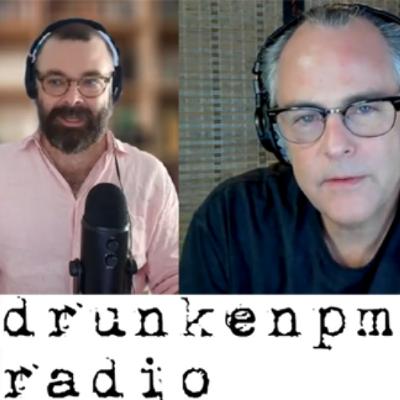
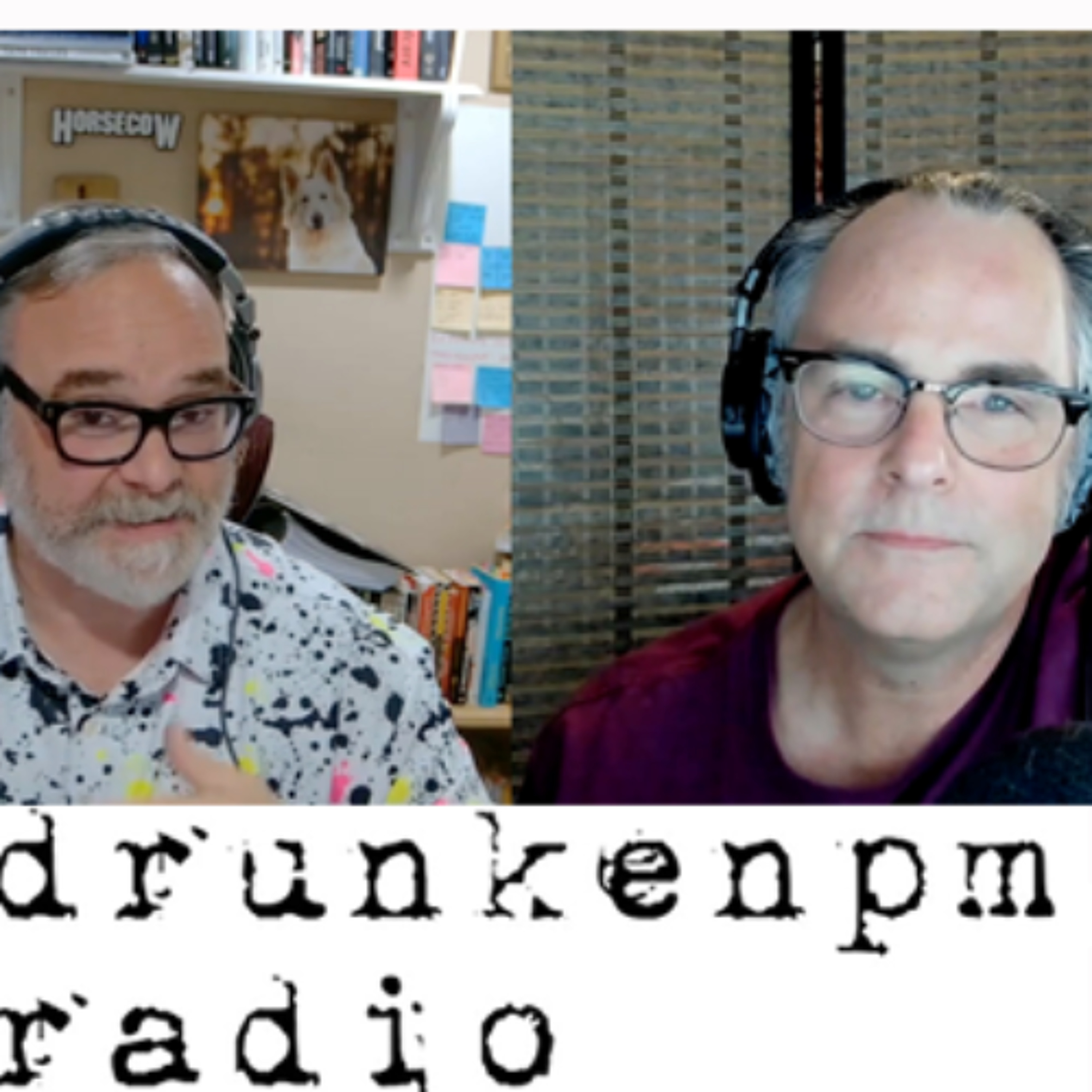
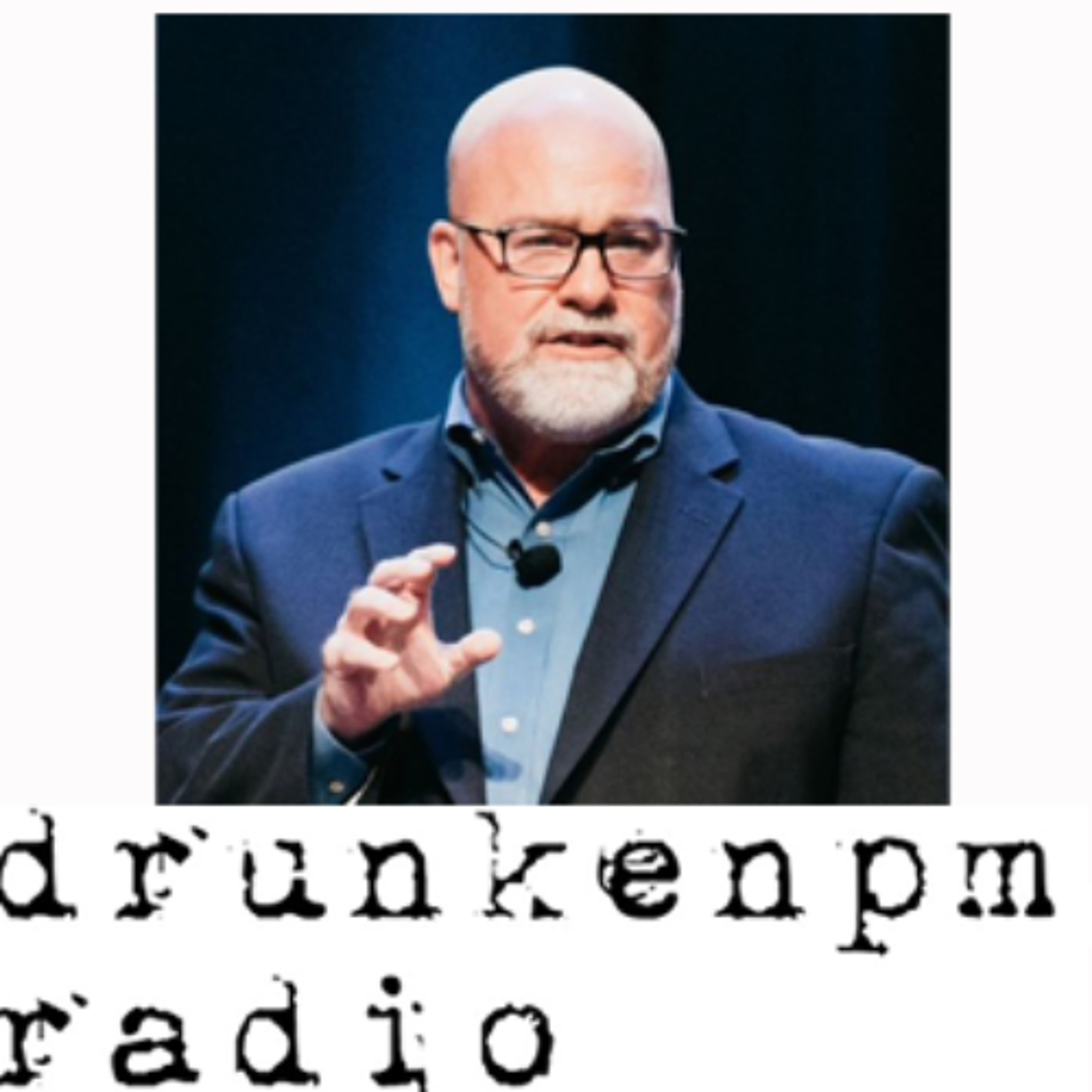
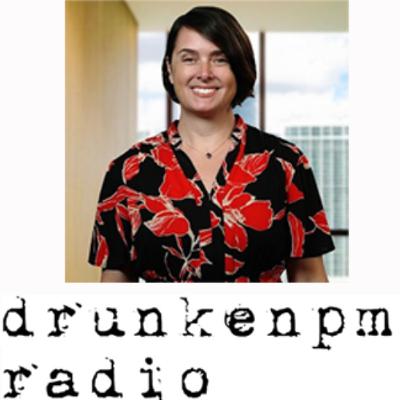



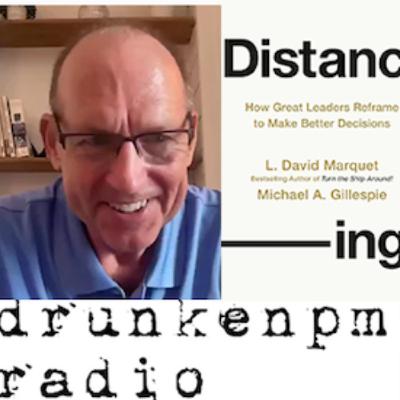
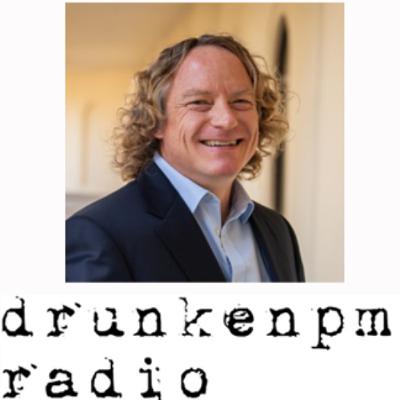


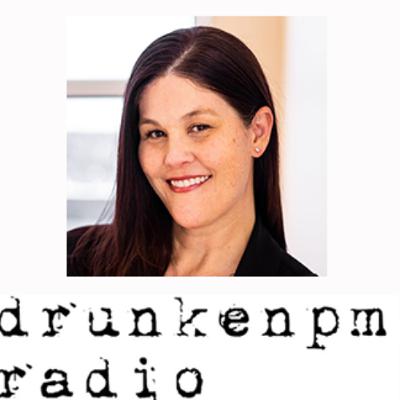
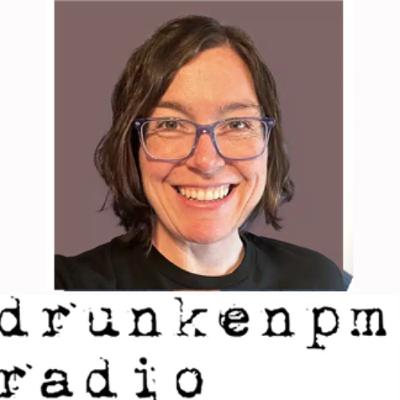
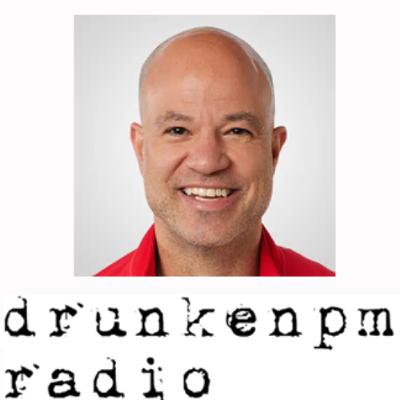


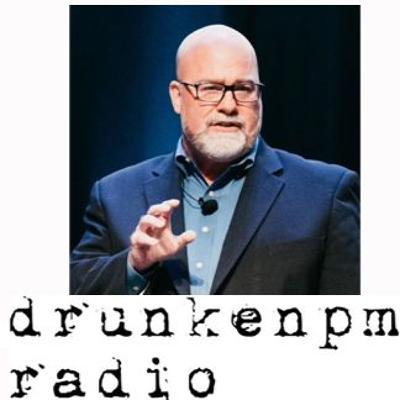




Compare Celoxis, Microsoft Planner, and Microsoft Project to find the best project management software. This PPM tool comparison highlights features, usability, and pricing. https://www.celoxis.com/article/microsoft-planner-vs-project-vs-celoxis
I recall having to calculate the cost of the logistics application we were developing, which was really tough due to the lack of a suitable calculator. But then I was fortunate and discovered it here project cost calculator https://fulcrum.rocks/blog/software-cost-estimation/ , which I highly recommend. It will, in my opinion, benefit a vast number of people.